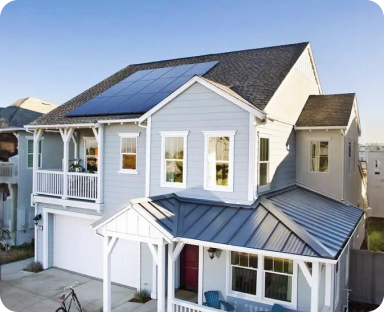Last weekend’s Wall Street Journal Opinion piece “Big Solar’s Subsidy Bubble” portrays solar companies as ‘dubious’ and pulling ‘schemes’ to ‘cash in’ on taxpayer dollars. We respectfully disagree.
The Solyndra case rightfully criticized by the Journal was a limited stimulus related direct company investment; the vast majority of the solar sector has never received such direct support.
The primary solar incentives including tax credits, net metering, and utility rebates are entirely different from the Solyndra case: they are claimed by the owner of the system, which creates demand pull. Customers decide which businesses and technologies to work with. These incentives have indeed been instrumental in driving EmPower’s growth from 2 to 70 people in 10 years, and remain important today.
Rapid solar growth has created a virtuous cycle of cost reduction by creating economies of scale. This means that solar needs less ratepayer and taxpayer subsidy to beat ConEd and PSEG-LI electricity prices.
In 2004, solar incentives for an average home project could reach $60,000 or more. Today, tax credits and rebates average around $18,000. Just two years ago the rebate from PSEG was $1.75/watt ($17,500) and now it is .20 cents/watt ($2,000).
The WSJ piece states: that “the government-inflated solar bubble could pop if subsidies shrink.” We believe that these three main factors will prevent such a “pop” and instead allow homeowners and businesses to still take advantage of solar savings;
Consumer Choice & Involvement
- This requires modernizing the way utilities operate and price electricity. We believe that a more responsive 21st century market based electricity pricing system, that empowers utility “customers” (not ratepayers) to make decisions, will create a more level playing field.
- Greater use of tiered and ultimately real-time pricing would be transformative.
- Solar generates well when spot market electricity prices are high.
- Consumers will be armed with more actionable data to reduce energy costs
Private Investment
- In the last few years, investors, banks and energy users are investing enormous sums into solar.
- Google, Warren Buffet, Goldman Sachs, Bank of America, Chase, just to name a few.
- When a homeowner or business buys a system, they are adding a new channel of investment into energy infrastructure.
- The investment community has embraced the risk profile of solar plants, and there is strong demand for new investments.
Continued Solar Cost Reductions
- SunPower makes the world’s most powerful solar panels. As rebates and incentives have come down over the past 10 years, SunPower has been able to reduce the cost of the equipment. We expect this trend to continue.
- Soft costs reductions will continue as ecosystem of the sector gains experience and economies of scale kick in. From business administrative costs, to municipal permit processes, to the New York State Research and Development Authority’s program management.
We understand that the Wall Street Journal’s editorial staff is critical of government waste. So are we. But the entire spectrum of government solar incentives should not be condemned because of some egregious cases.
In fact, solar incentives have created a vibrant business sector with significant entrepreneurship and innovation; everything that free market advocates stand for. We diversify the energy infrastructure with clean energy, to boot.
Get an estimate for solar and claim your energy independence.

Get an estimate for solar and claim your energy independence.
About the Author
EmPower Solar develops, engineers, installs, and services solar and battery systems for residential and commercial clients. Since 2003, EmPower Solar has empowered thousands of New York homeowners and businesses with 47 megawatts of distributed solar. Its vision is to create a new energy paradigm powered by clean, renewable energy for a more prosperous, healthy, and civil world. The company culture is defined by the EmPowering Way, which results in consistent 5-star customer service reviews. For more information visit empower-solar.com.